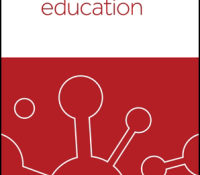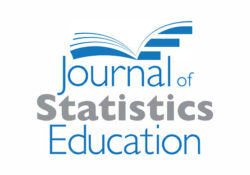tandfonline.com har udgivet en rapport under søgningen “Teacher Education Mathematics”: Immersive virtual reality (VR) for digital media making: transmediation is key Link til kilde
Like this:
Like Loading...
tandfonline.com har udgivet en rapport under søgningen “Teacher Education Mathematics”: Abstract Abstract There has been an increase in research regarding experiences within virtual education. However, little attention has been given to the middle level context. Through a theoretical lens grounded in stage-environment fit theory, this phenomenological case study describes the lived experiences of two middle level virtual learners as they engage in an academic year of virtual middle school. Their shared experiences give attention to a need for relatedness, self-efficacy, motivation and autonomy in the virtual context. Link til kilde
Like this:
Like Loading...
eric.ed.gov har udgivet: This paper presents how virtual containers enhance the implementation of STEAM (science, technology, engineering, arts, and math) subjects as Open Educational Resources (OER). The publication initially summarizes the limitations of delivering open rich learning contents and corresponding assignments to students in college level STEAM areas. The role that virtual containers can play in current distant education is then discussed, starting by reviewing related teaching efforts around the use of legacy virtual machines. We then focus on the superseding container technology and how it can bridge the gap between online students, humble computing resources, teachers and IT specificities. As a practical example, we present an experience carried out at the online School of Engineering & Technology at Universidad Internacional de La Rioja (UNIR). Within the context of a… Continue Reading →
Like this:
Like Loading...
eric.ed.gov har udgivet: In a decade, virtual education in its contemporary form of asynchronous, computer-mediated interaction between a teacher and students over the Internet has grown from a novelty to an established mode of education that may provide all or part of formal schooling for nearly one in every 50 students in the US. In a non-random 2007 survey of school districts, as many as three out of every four public K-12 school districts responding reported offering full or partial online courses. There can be little question that virtual courses in certain areas (e.g., math, English, social studies) produce tested achievement results on a par with those of their conventionally taught counterparts. Nor is it debatable that more complex areas of the curriculum (e.g., the arts) are beyond the reach… Continue Reading →
Like this:
Like Loading...

tandfonline.com har udgivet en rapport under søgningen “Teacher Education Mathematics”: ABSTRACT ABSTRACT Virtual laboratory simulations are commercially available to train students; these creative resources are available to complete remotely without traditional time and safety restrictions of laboratory-based practical classes. We introduced a Health and Safety virtual laboratory simulation to a core large first-year science module. Having surveyed students using a combination of Likert-type responses, multiple answer questions and free text responses, students reported that it had increased understanding and knowledge. Additionally, students reported that the laboratory simulation was motivating and had increased confidence for actual practical classes. We also surveyed students one year after completing the simulation finding a similar pattern of responses; the simulation had been useful, increasing confidence and knowledge about Health and Safety. Our data show that… Continue Reading →
Like this:
Like Loading...
eric.ed.gov har udgivet: The 2006-11 Regional Educational Laboratory Appalachia at CNA conducted a rigorous evaluation of the Kentucky Virtual Schools hybrid algebra I curriculum. The curriculum combines traditional face-to-face instruction with an online program. This study used a two-cohort sample with 25 high schools in year 1 (SY 07/08: 13 treatment and 12 control) and 22 in year 2 (SY 08/09: 11 and 11), the randomized sample included 6,908 students, 61.4 percent of whom were in rural schools. As reported in the study, “Effects of the Kentucky Virtual Schools Hybrid Program for Algebra I on Grade 9 Student Math Achievement,” researchers found that the hybrid class format was no more effective at increasing student achievement and future coursetaking in math than algebra offered in the traditional face-to-face format Eight appendixes… Continue Reading →
Like this:
Like Loading...
tandfonline.com har udgivet en rapport under søgningen “Teacher Education Mathematics”: Abstract Abstract In the past few years many choreographers have focused upon implementation of computer technology to enhance their artistic skills. Computer vision technology presents new methods for learning, instructing, developing, and assessing physical movements as well as provides scope to expand dance resources and rediscover the learning process. This work reviews the study done over AR based learning technologies for the development of inter personal skills. This paper further elaborates the literature done till date within the scope of AR based training for educational aspects. The review focuses on the techniques categorized according to the type of dance learning method which can further be enhanced and addressed by means of novel AR based technology. The authors aim to provide… Continue Reading →
Like this:
Like Loading...
tandfonline.com har udgivet en rapport under søgningen “Teacher Education Mathematics”: Abstract Formulae display:?Mathematical formulae have been encoded as MathML and are displayed in this HTML version using MathJax in order to improve their display. Uncheck the box to turn MathJax off. This feature requires Javascript. Click on a formula to zoom. Abstract Sample survey design is a topic usually taught to students undertaking a minor or major in statistics in the latter part of their bachelor’s degree. This article describes an assessment project that fosters active learning and helps to develop a set of essential skills for statistical practice. The project is completed in pairs and submitted in two parts. This allows feedback from the first part to be acted upon for the second part. Ideally, students would gain experience… Continue Reading →
Like this:
Like Loading...




